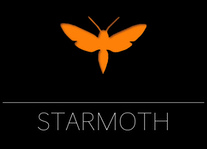Ship Focus : Inyanga Class

Type: Long-range exploration vessel.
Original manufacturer: Moon Communes (Block A) and Qith Saïmour (Block B).
Current pattern status: licensed (Block A and B).
Propulsion: Q-drive, Solar Moth (auxiliary).
FTL capable: yes. (Butterfly Drive variation).
Length : 120 meters.
Payload : 5,000 tons.
Crew: up to 40, generally <30.
Also known as Butterfly Carrack, the Starmoth Ship.
In Zulu mythology, Inyanga is a moon goddess traditionally linked to healers. In settled space, the name is also closely associated with a class of deep space vessels that have been elevated to fame by the Starmoth Initiative. The Inyanga frame derives from interplanetary age ships and is oriented towards reliability, habitability and endurance. Its somewhat unconventional frame is more inspired by space outposts than starships, allowing for long stays in planetary orbit. When the ship is accelerating or decelerating, the main habitation ring rests idle, while the living quarters are oriented in the axis of thrust. In planetary orbit, the ship switches its habitation ring on, turning into a small self-contained space station with centrifugal gravity.
The Inyanga is powered by a q-drive, a type of unconventional propulsion that harvests momentum from the solar wind to eject propellant and thus generate thrust. The q-drive uses a kilometer-long tether, attached to the ship via the coils that also serve as the ring's main bearings. The Inyanga uses water as propellant -- the spherical containers surround the engine section and also serve as armor for a small radiation shelter. The ship's q-drive is also located in this part of the vessel, ensuring that cosmic radiation does not interfere with the delicate navigation computers used by the Starmoth Initiative. Finally, the front section houses two docking bays, generally used for orbit-to-ground shuttles.
The Inyanga is an iconic ship, forever associated with the first long-range journeys carried out by the Starmoth Initiative, such as the Laniakea Expedition. Fifty years after the maiden journey of its first prototype, it is still at the forefront of interstellar exploration. Versatile and comfortable, the Inyanga is the vessel of choice for explorers, xenobiologists and surveyors. Though it has been superseded in range and capability by newer dedicated vessels, the Inyanga remains notable for its comfort and ease of maintenance.
Two to three hundred Inyangas are in service in human space. While the majority of them are exploration vessels, some of them are used as light long-range cargo vessels, and at least five of them have seen service as special operations vessels in the Smyrnian Bubble.
Illustration courtesy of Lilly Harper, who writes most excellent sci-fi prose on the Beacons in the Dark blog.
All content in the Starmoth Blog is © Isilanka
Written content on Starmoth is distributed under a Creative Commons Attribution Non-Commercial Share-Alike 4.0 license
